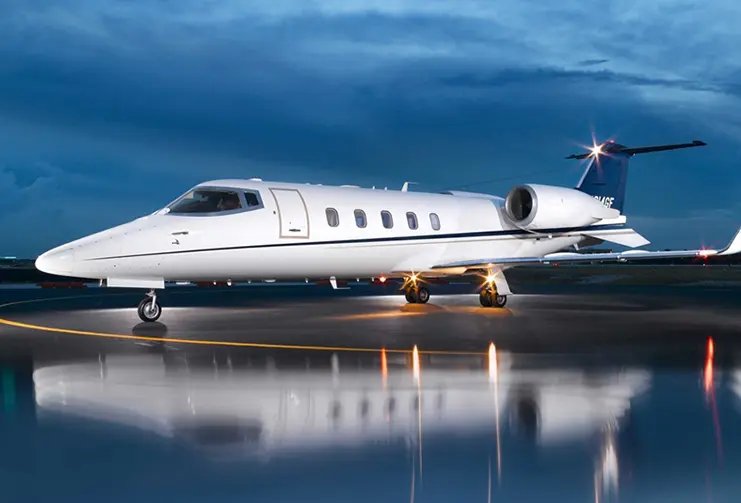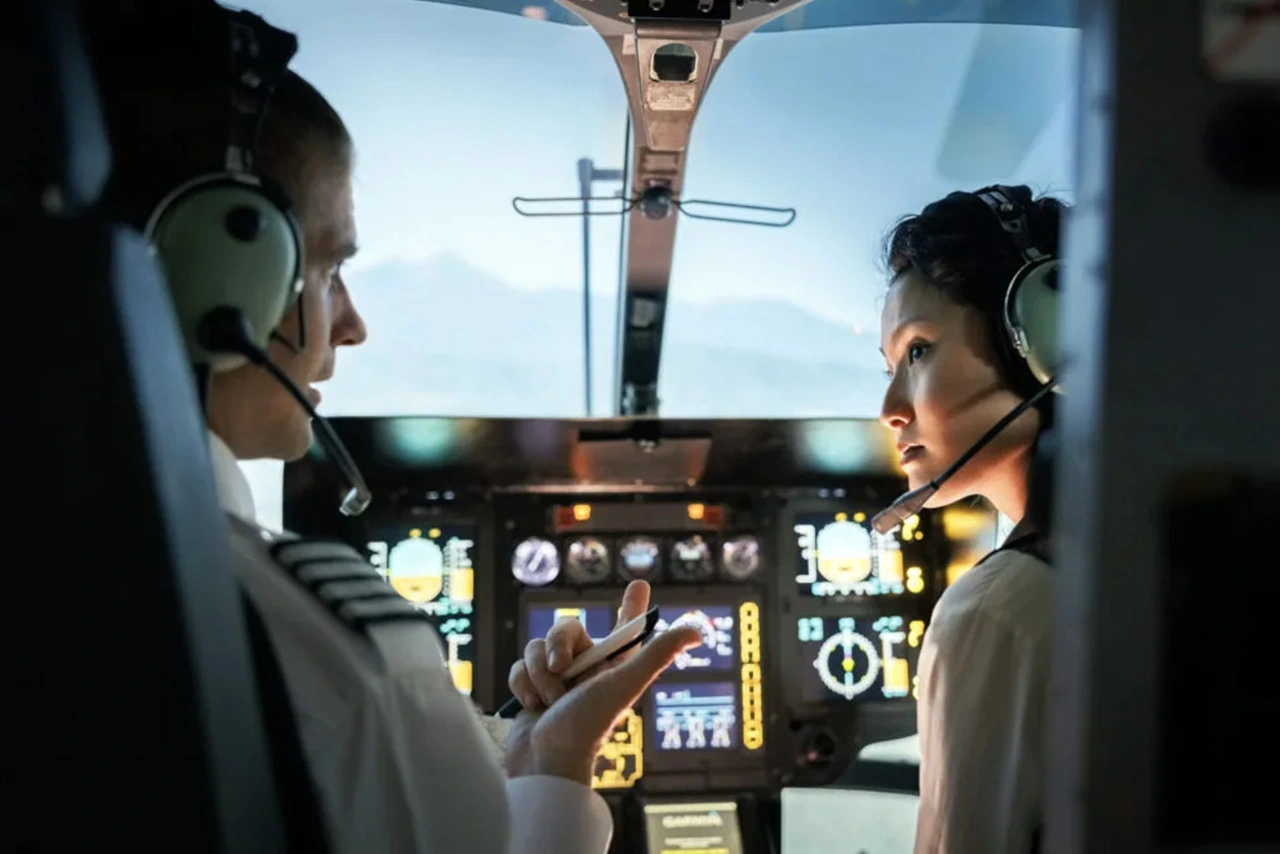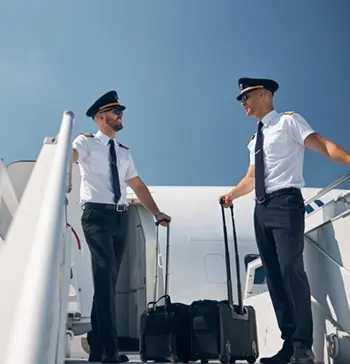
Student Pilot License (SPL)

Soar to New Heights: Your Guide to Obtaining a Student Pilot License (SPL) in the Philippines
Have you ever gazed at the clouds, yearning to join the majestic birds soaring amongst them? Do you dream of navigating vast landscapes, feeling the wind whisper secrets through the wings of your own aircraft? If so, obtaining a Student Pilot License (SPL) in the Philippines could be the first step towards turning that dream into reality.
This guide serves as your comprehensive roadmap to acquiring your SPL, from understanding the eligibility requirements and application process to exploring exciting career paths and personal fulfillment this license unlocks.
Unveiling the Freedom of Flight: What is an SPL?
The SPL is your initial passport to the world of aviation. It allows you to experience the thrill of solo flight, learning the fundamentals of piloting under the watchful eye of a certified flight instructor (CFI). While you can’t carry passengers or engage in commercial activities with this license, it lays the foundation for further licenses and opens doors to diverse career paths and personal adventures.
Are You Ready to Take Off? Exploring Eligibility:
Before embarking on this exciting journey, ensure you meet the following criteria:
- Age: You must be at least 16 years old. This allows you to start early, gaining valuable experience before pursuing a Private Pilot License (PPL).
- Medical Fitness: Obtain a Class 2 Medical Certificate from a CAAP-approved Aviation Medical Examiner (AME) to confirm your physical and mental ability to fly.
- Knowledge is Power: Pass written exams and assessments covering crucial aeronautical topics like flight principles, air law, and navigation. Ground school programs equip you with this essential knowledge.
- Mastering the Basics: Receive proper training from a certified flight instructor, learning basic flying skills through dual instruction and eventually demonstrating your readiness for solo flight through an instructor endorsement.
- Communication Prowess: Possess a good command of English, the global language of aviation, ensuring clear communication with air traffic control and fellow pilots.
Understanding the Limitations of Your Wings:
Remember, the SPL comes with certain restrictions:
- Solo Flight Only: Focus on honing your skills without passengers onboard. This period strengthens your foundation before carrying others.
- No Commercial Operations: Refrain from using your aircraft for commercial purposes like transporting cargo or offering paid flights.
- Weather Matters: Maintain good visibility (minimum 3 miles during the day, 5 miles at night) and avoid flying in weather requiring instrument navigation.
- Instructor’s Guidance: Always adhere to the limitations specified in your logbook by your CFI, ensuring your safety and progress.
Embarking on Your SPL Journey: A Step-by-Step Guide:
- Ground School: Choose a program that aligns with your learning style and budget. Options include online courses, classroom settings, or self-study materials.
- Medical Examination: Schedule an appointment with a CAAP-approved AME for your Class 2 Medical Certificate.
- Flight Training: Enroll in an accredited flight school offering SPL programs. Expect ground instruction, simulator sessions, dual flight lessons, and solo flights.
- Logbook Maintenance: Your CFI will meticulously record your progress in your logbook, ensuring you meet the minimum flight time requirements.
- License Application: Gather necessary documents (medical certificate, flight training records, etc.) and apply for your SPL license with CAAP.
The World Awaits: Exploring Career Paths and Beyond:
The SPL is your stepping stone to various exciting possibilities:
- Private Pilot License (PPL): Take passengers on board and explore the beauty of the Philippines from a whole new perspective.
- Commercial Pilot License (CPL): Pursue a career as a professional pilot, flying for airlines, cargo companies, or private jets.
- Flight Instructor (CFI): Share your passion by training future pilots and shaping the next generation of aviators.
- Personal Fulfillment: Experience the unique satisfaction of solo flight, conquer challenges, and build remarkable memories.
Additional Resources:
- Flight Schools: Research reputable schools in the Philippines, comparing training programs, costs, and locations.
- Financial Aid: Explore scholarship opportunities, loans, and other financial resources to make your dream accessible.
- Stay Connected: Engage with online communities and forums to connect with aspiring and experienced pilots in the Philippines.
Embrace the Adventure: Take Flight Today!
Obtaining your SPL is more than just a license; it’s a gateway to self-discovery, lifelong learning, and boundless opportunities. Remember, the journey will require dedication, passion, and continuous learning. Embrace the challenges, savor the triumphs, and let the joy of soaring through the skies fuel your every step.

Frequently asked questions
What are the requirements for student pilots in the Philippines?
Requirements for Student Pilots in the Philippines:
To become a student pilot in the Philippines, you need to fulfill the following requirements:
- Age: Be at least 16 years old.
- Medical Fitness: Hold a valid Class 2 Medical Certificate issued by a CAAP-approved Aviation Medical Examiner.
- Education: No specific educational requirement, but a high school diploma is recommended.
- English Proficiency: Demonstrate clear communication skills in English, crucial for air traffic communication and international operations.
- Clearance: Possess a National Bureau of Investigation (NBI) Clearance.
- Passport (for foreign students): Valid passport with necessary visas and permits for studying in the Philippines.
Flight School Application: Submit your application to a CAAP-accredited flight school and fulfill their specific requirements.
How long does it take to get a student Pilot licence in the Philippines?
Obtaining a Student Pilot License (SPL):
The time it takes to acquire your SPL varies depending on several factors, including your dedication, available time, and flight school’s program structure. It typically takes 3-6 months for dedicated individuals, potentially less for those with prior aviation experience.
Can an international student become a pilot in the Philippines?
International Students Becoming Pilots in the Philippines:
Yes, international students can become pilots in the Philippines! However, additional requirements and considerations apply:
- Special Student Permit (SSP): Obtain an SSP from the Bureau of Immigration for studying aviation in the Philippines.
- Visa: Secure a valid student visa with a duration covering your entire training period.
- Flight School Admissions: International students may face stricter entry requirements or higher program costs at some flight schools. Research and contact schools for details.
Employment Restrictions: After obtaining your pilot licenses, securing pilot jobs in the Philippines might require work visas and authorization for foreign nationals.
How to become a pilot in the Philippines for international students after 12?
Becoming a Pilot after 12th Grade (International Students):
Here’s a suggested path for international students after 12th grade:
- Research and choose a CAAP-accredited flight school. Consider location, program structure, cost, and international student support.
- Secure your SSP and student visa. Contact the Philippine embassy or consulate in your home country for processing details.
- Apply to the chosen flight school and meet their specific requirements.
- Obtain your SPL, followed by subsequent licenses like PPL, CPL, and ATPL, fulfilling all prerequisites and CAAP regulations.
- Explore job opportunities with airlines or other operators, potentially requiring work visas and licenses specific to the airline or country.
Are pilots in demand in the Philippines?
Pilot Demand in the Philippines:
Yes, pilots are currently in demand in the Philippines! The aviation industry is experiencing growth, creating job opportunities for qualified pilots. Airline expansion, increasing cargo operations, and the need for tourism pilots contribute to this demand. However, competition can be high, so obtaining proper training, relevant licenses, and building experience is crucial.
This information is based on general guidelines and current trends. Always consult with CAAP and accredited flight schools for the most up-to-date requirements and specific details relevant to your individual situation.
Free Career Guide

Want to find out more about our pilot courses?
Download our free eBook to learn all about pilot training in the Philippines, including the qualifications needed, the training process, available courses, and career opportunities. Find out how you can take the first step toward a rewarding career in aviation.






